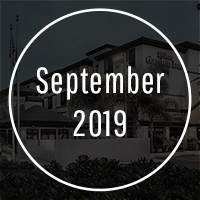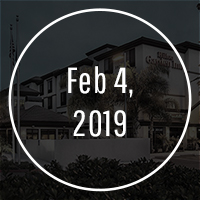The Transformation of the Hotel Industry in the 2010s
We have officially been transformed into the John Naisbitt coined “hi tech, hi touch” world, 33 years after the release of his book. Led by revenue management but now including distribution, channel management, social media marketing, Web 2.0 and more. The industry has been permanently changed.
Digital Marketing is required to both acquire and retain guests. Believe it or not, only a real quality revolution gives you the competitive edge, because brand loyalty is very limited in today’s millennial dominant hospitality market. Since hospitality businesses do not hold customers captive, the only way we can prevent “desertion” is to continually outperform the competition. In addition, by soliciting feedback from the “deserters” or former customers, we can dig out the weaknesses that really matter.
The growth of mobile is a game changer in that the amount of time between looking, booking and staying is reduced. In 2010, that was not the case. Customer experience or “CX” today allows us to drive a CX-friendly culture through interconnection and innovation. Anyone attending a conference today will be exposed to the trends of personalization, big data, omni-channel/multichannel campaign management, marketing automation and location-based services. Measurement of all of these will dictate what gets utilized. It’s all new.
Millennials have become the fastest growing customer segment within the hospitality industry. Lobby bars and hotel restaurants are wide open with combination work, play and eat/drink spaces designed with this millennial customer in mind, one who is a “party of one” but “hanging out together.” Millennial travelers do not exhibit the same loyalty to brands as their parents do. This opens the doors for independents and makes it even more difficult to keep that guest returning. Millennials were a non-factor when this decade began.
Customer service must include enabling guests to be self-sufficient. As an example, if a guest wants to find information using his/her smart phone, providing an app or mobile website that accommodates that information will appeal to many. The rise of this digital traveler requires the hotel industry to balance the expectation of personalization while enhancing the need to remain independent. Customer service must also be genuine and provide great, high quality recommendations delivered by a truly caring team member. “WOW” customer service is the only way to ensure repeat business. That’s the “high touch” component.
Booking more profitable business is critical as more revenues result from strong occupancy levels, average rates and revenue per available room (RevPAR). This may suggest more profits, but the growth in distribution costs as well as other operating costs such as health care and the minimum wage increases have stunted profit growth. One way to improve net income is by less reliance on the online travel agencies (OTAs). By directing guests to your hotel’s website and telephones, the savings are abundant. The digital distribution costs are soaring and the number of players entering the market to compete with OTAs is rapidly rising (think Google, Facebook, Apple, TripAdvisor, Amazon and even Airbnb). In 2010, we were begging OTAs to help us every day!
The sharing economy is a new reality that hoteliers are still grasping to embrace. Hotel web sites are still critical to keep up-to-date. Look at your conversion and bounce rates and determine why guests are not booking or more importantly, why they are booking your hotel via an OTA. We must anticipate the guest wants and needs and get those on to our web sites! This loyalty game is becoming more and more important as the OTAs and Airbnb battle to own our guests. While Airbnb was founded 10 years ago, nobody had heard of them.
The pre-stay communication has become a big part of a new dialogue that is occurring online with our guests. Another big deal today is marketing the property as having “an Instagram moment,” sort of today’s generation of the Kodak moment of the 1980s. Today’s travelers like visiting a destination and hotel that will show flattering images.
“Examining your images regularly with the intent of achieving a unique look and feel is worth the time,” according to Frank Bewley, Director of Revenue and Marketing at RAR Hospitality.
Virtual Reality (VR) is no longer just a gimmick. It can and will be used in some form frequently in 2018. Coupled with augmented reality, (AR) (think the Pokemon Go phenomenon) VR and AR will develop rapidly this next year. It is already widely used to sell adventure travel.
Crisis management and cyber security will gain in importance as the addition of Active Shooter training is added to a hotel’s playbook and cyber crime continues to increase dramatically. Neither of these were brought up just a few years ago. Stay tuned for our monthly updates—time flies when you are having fun!







